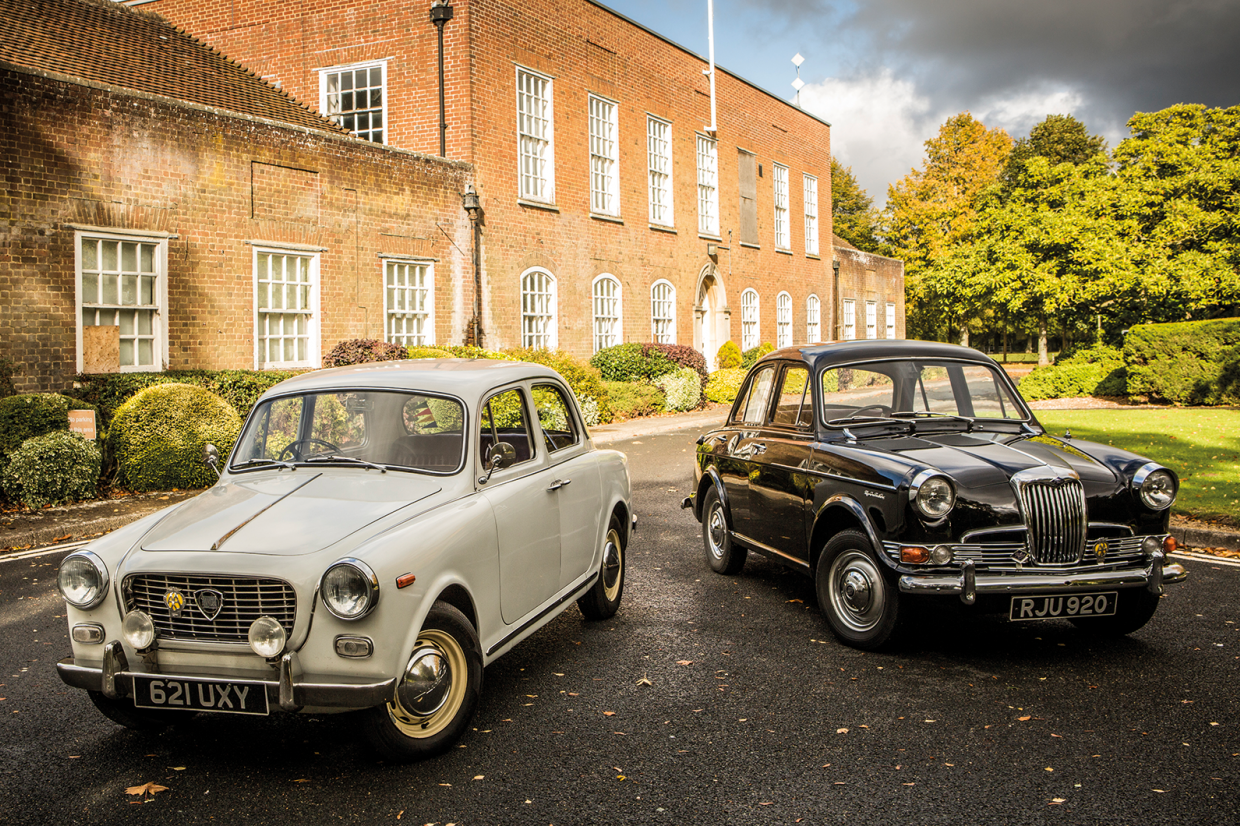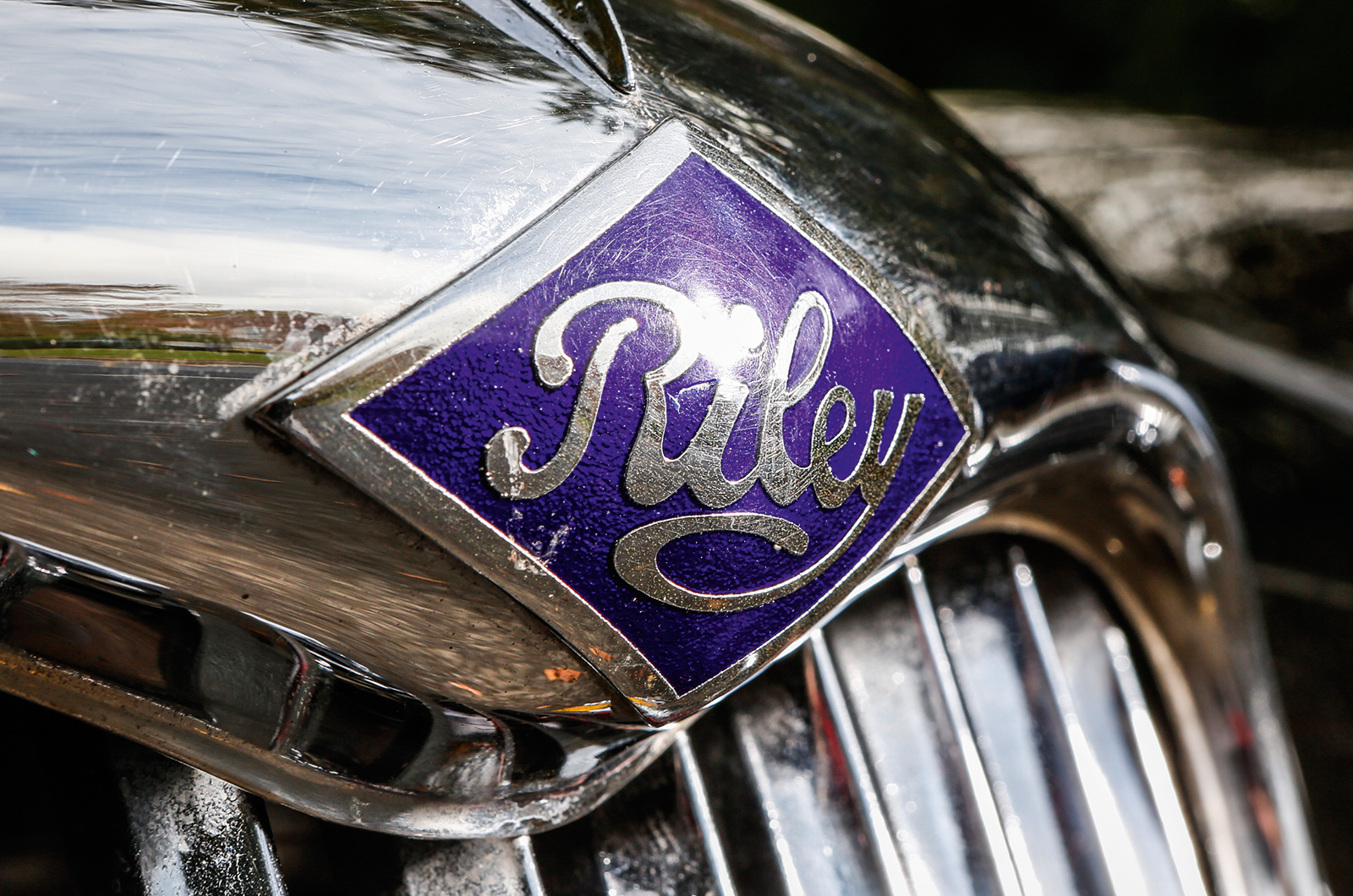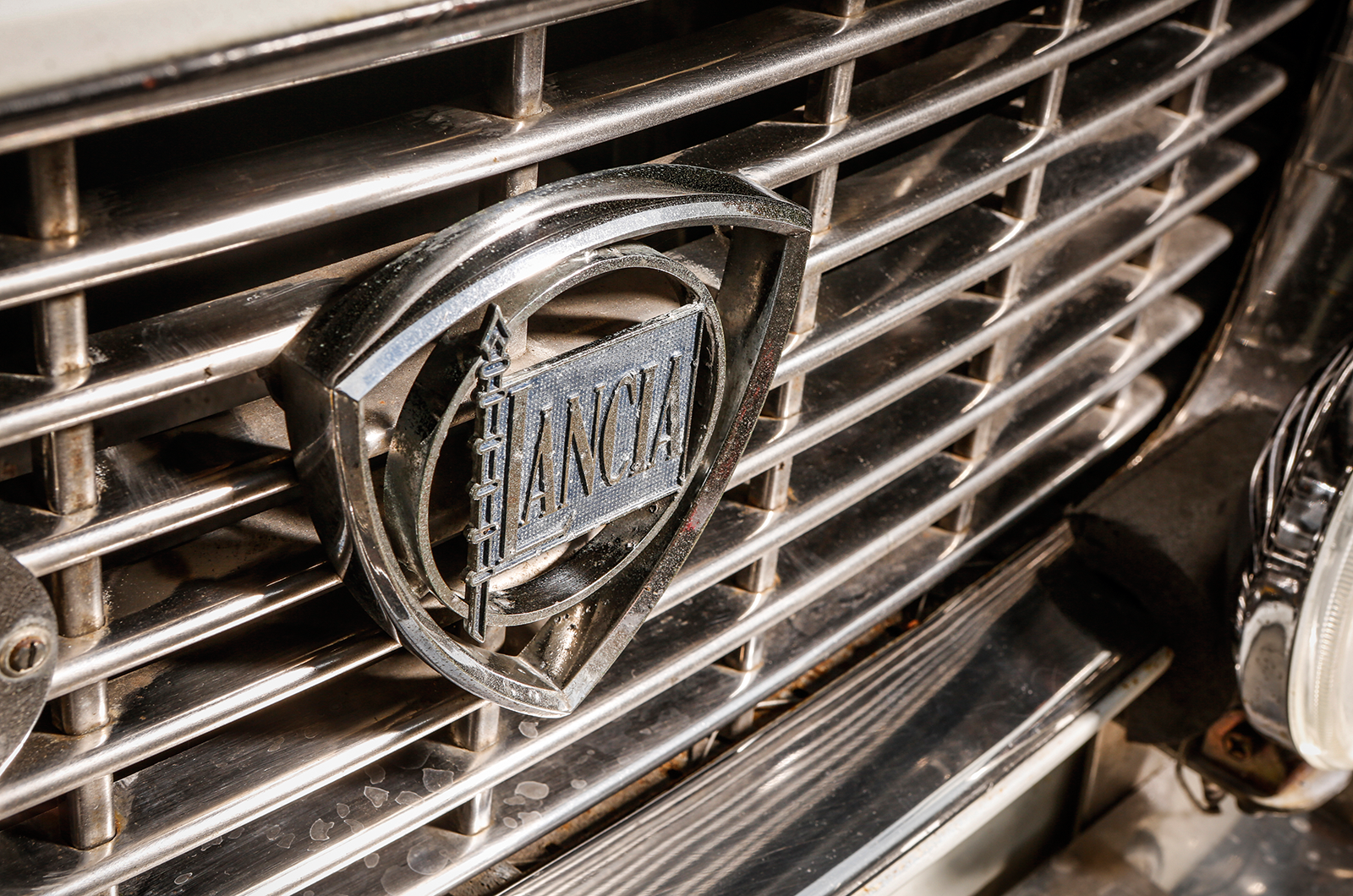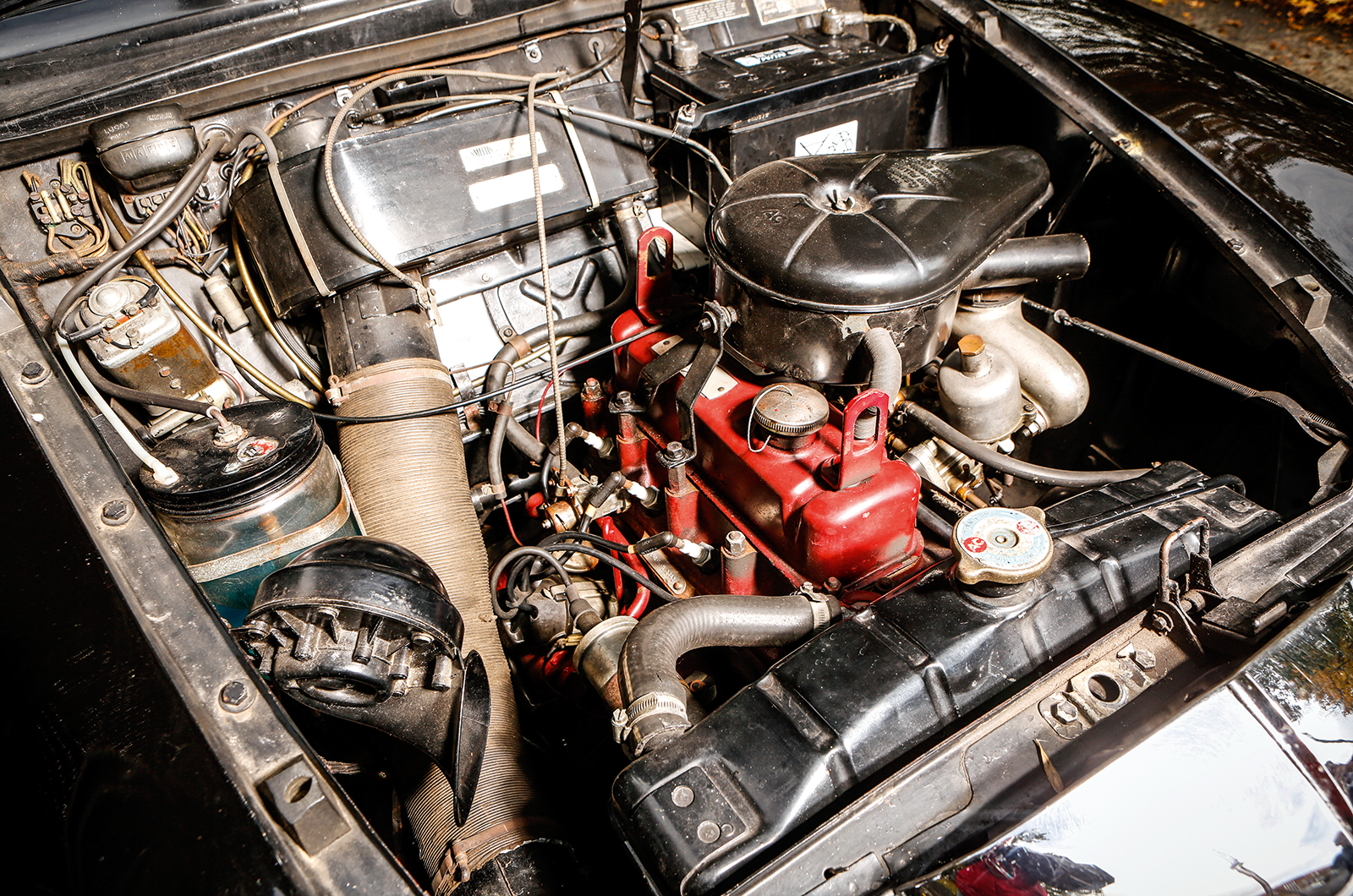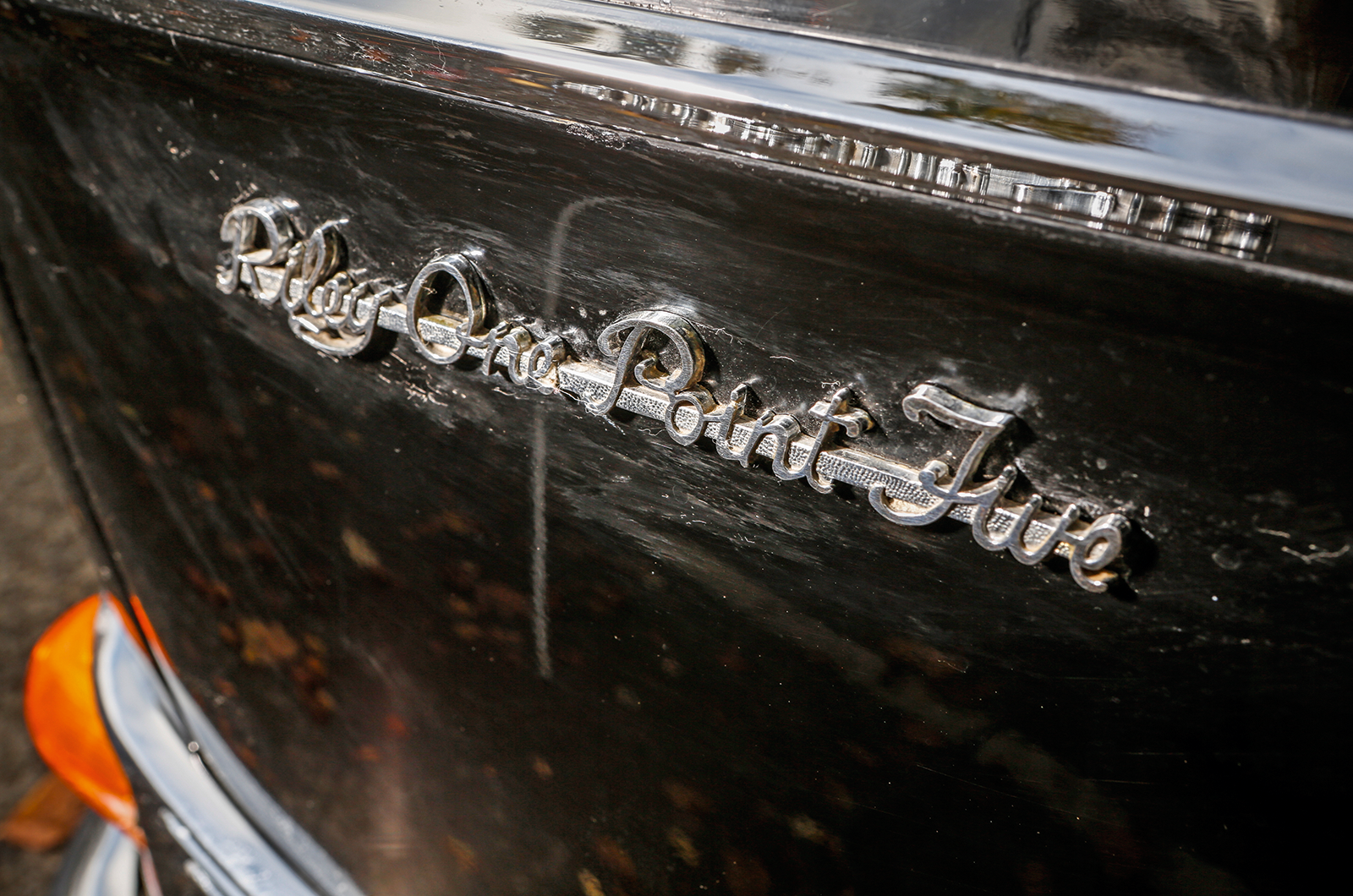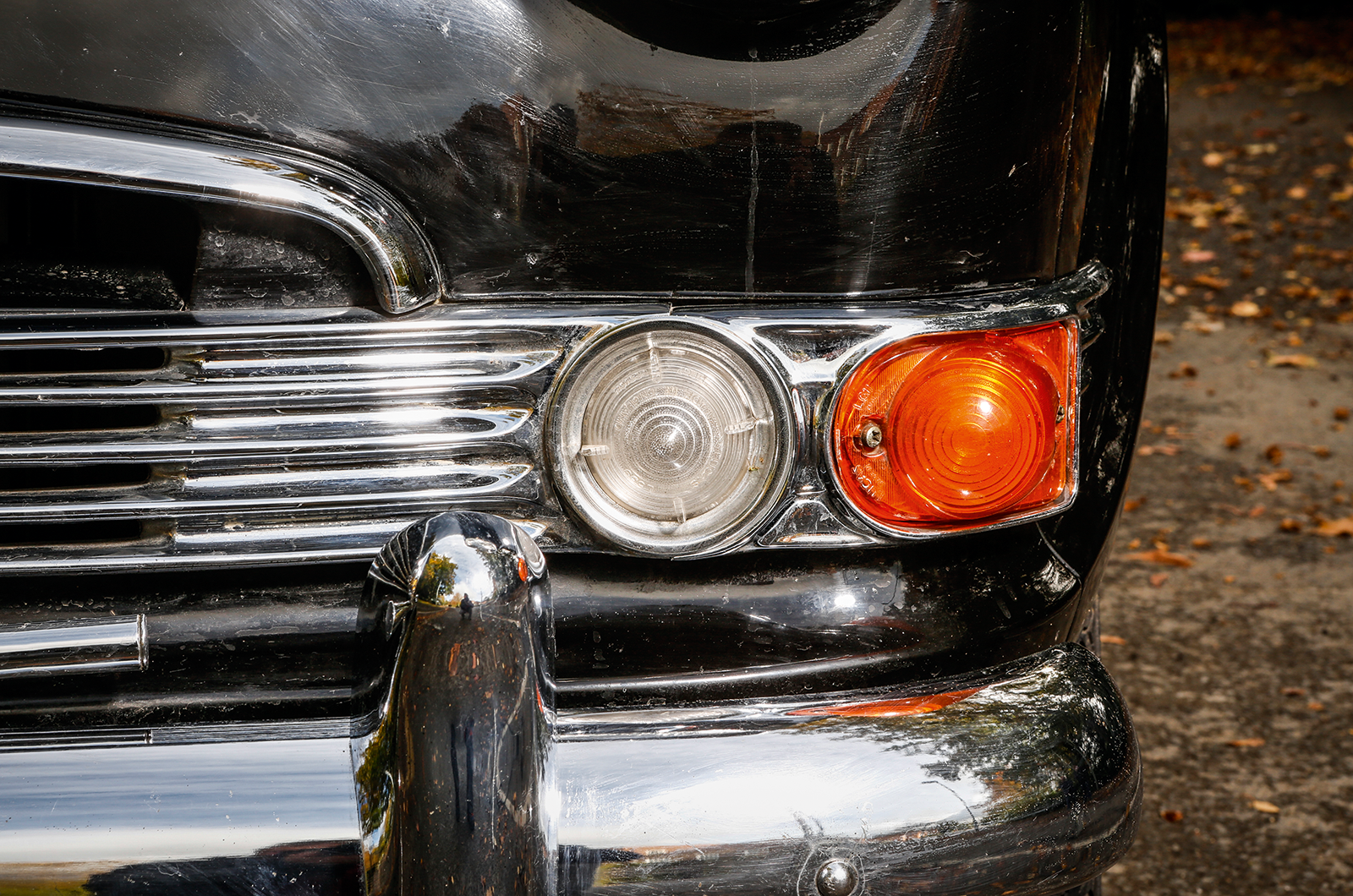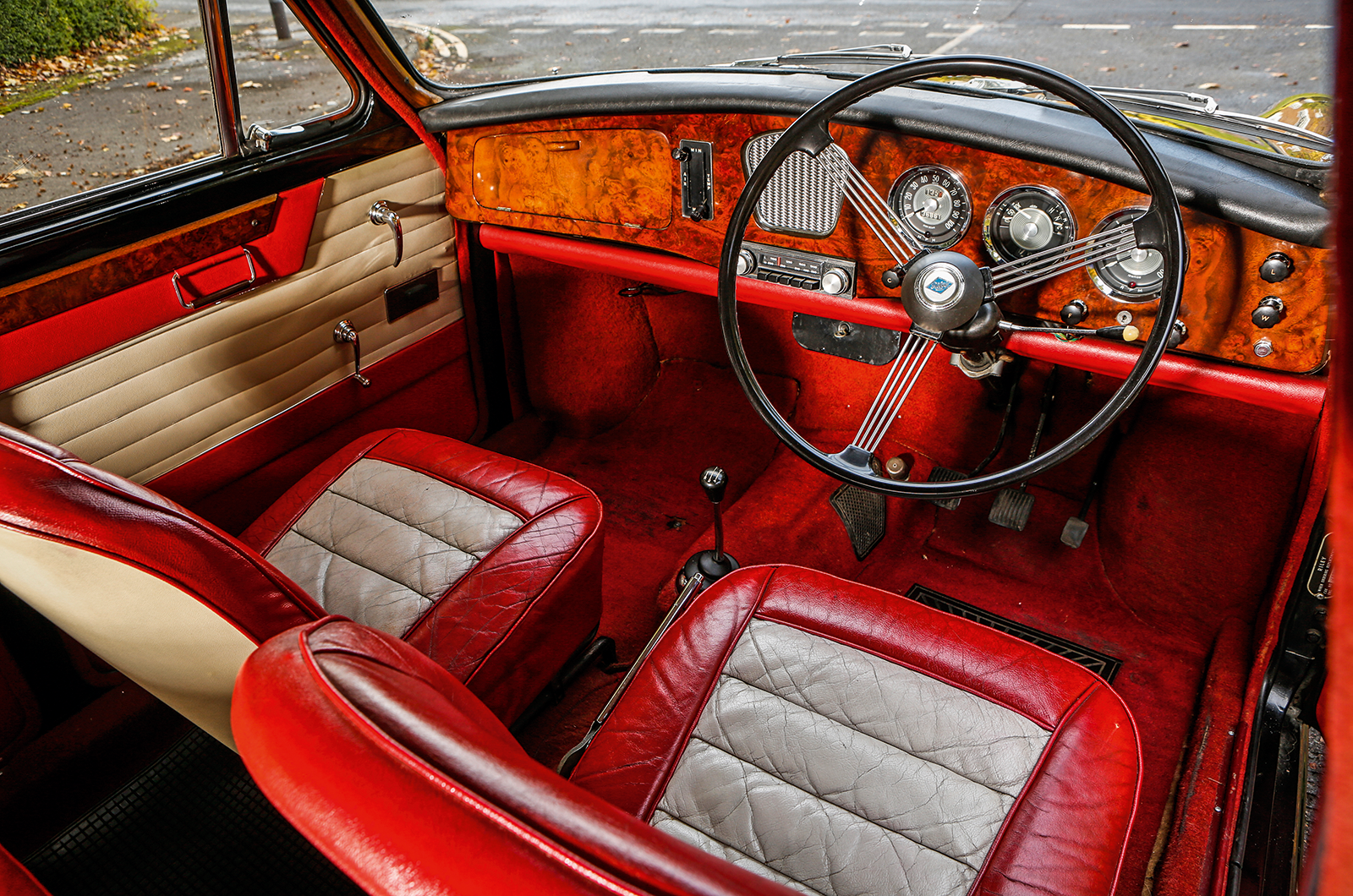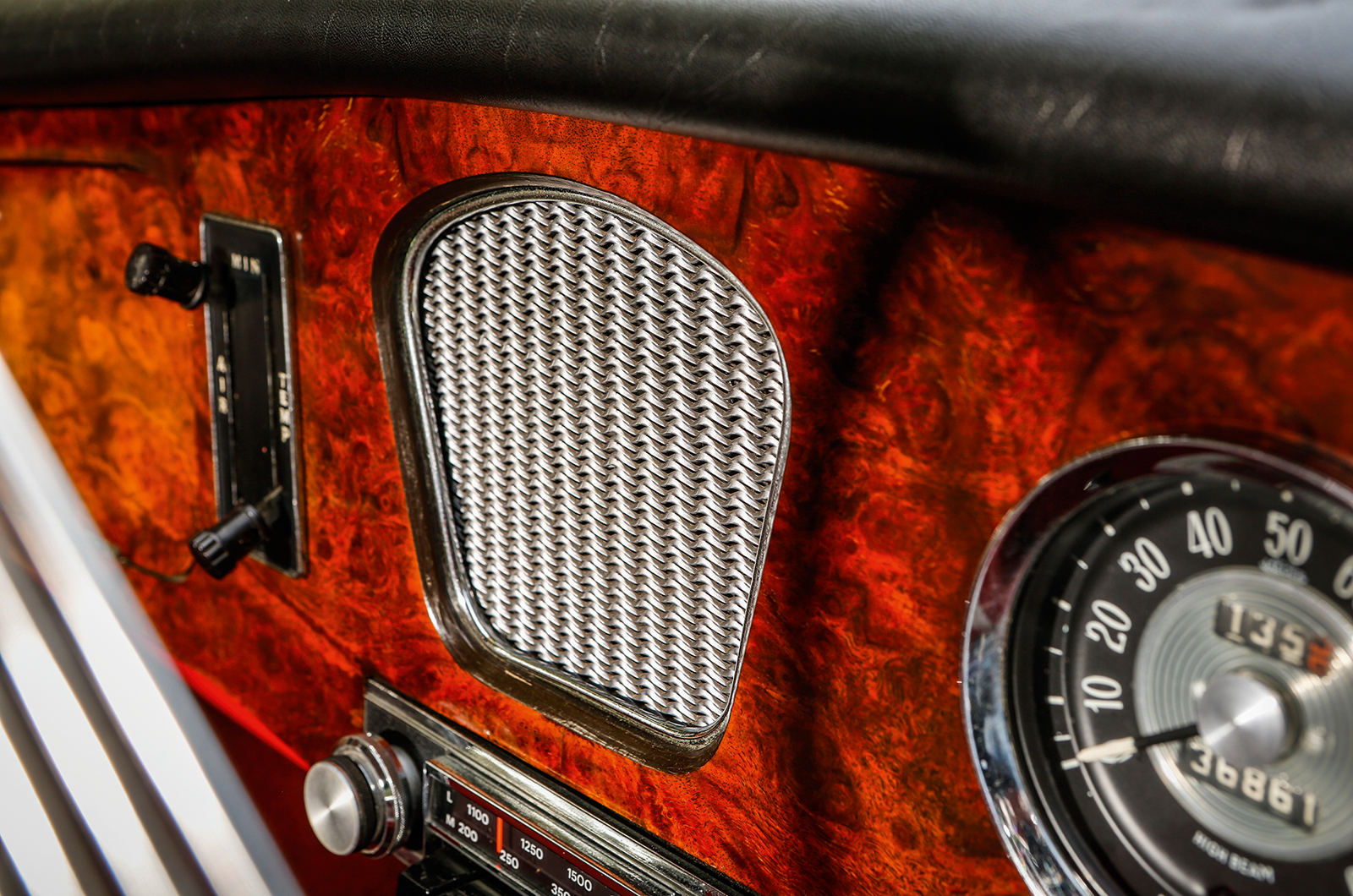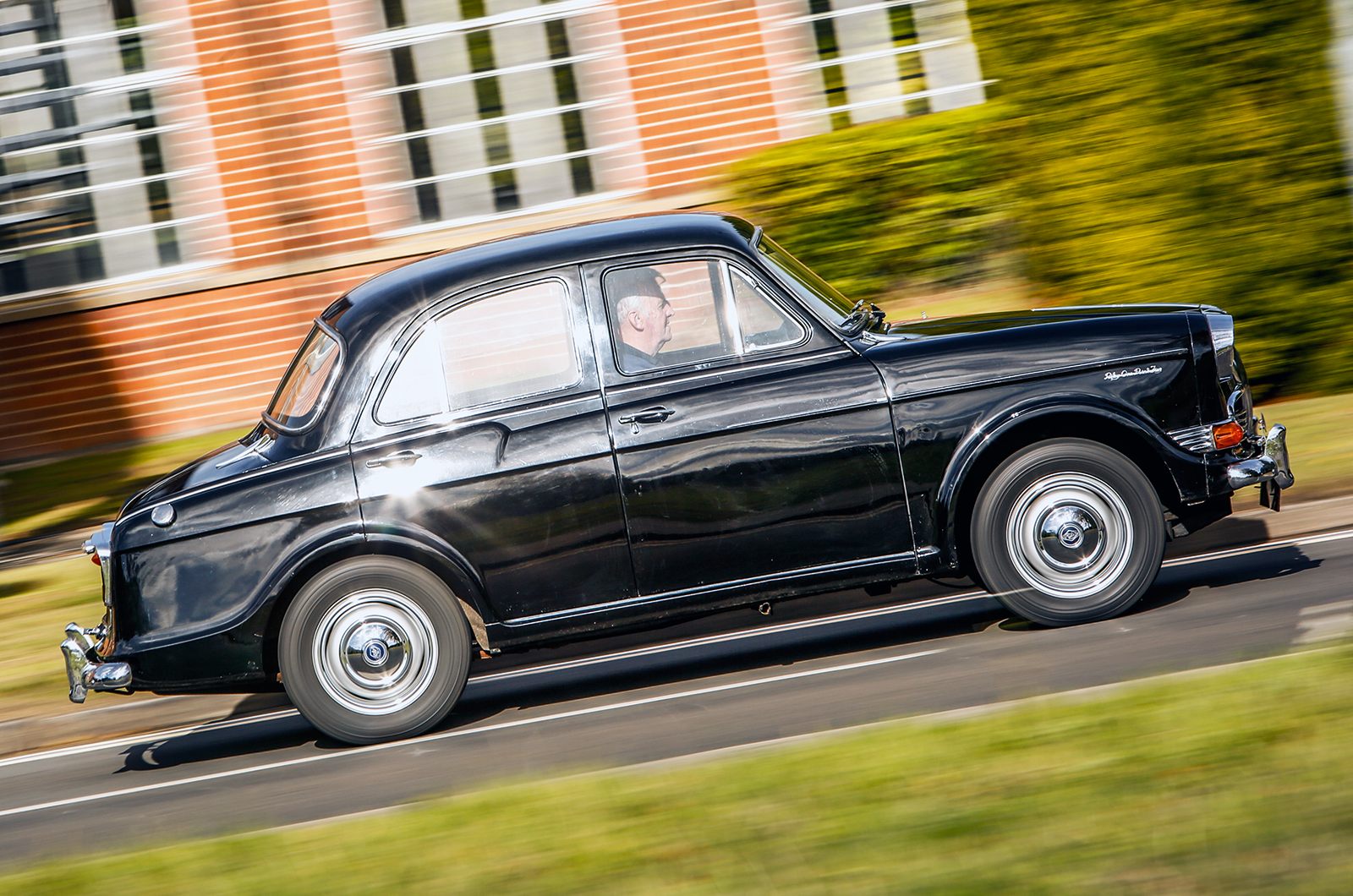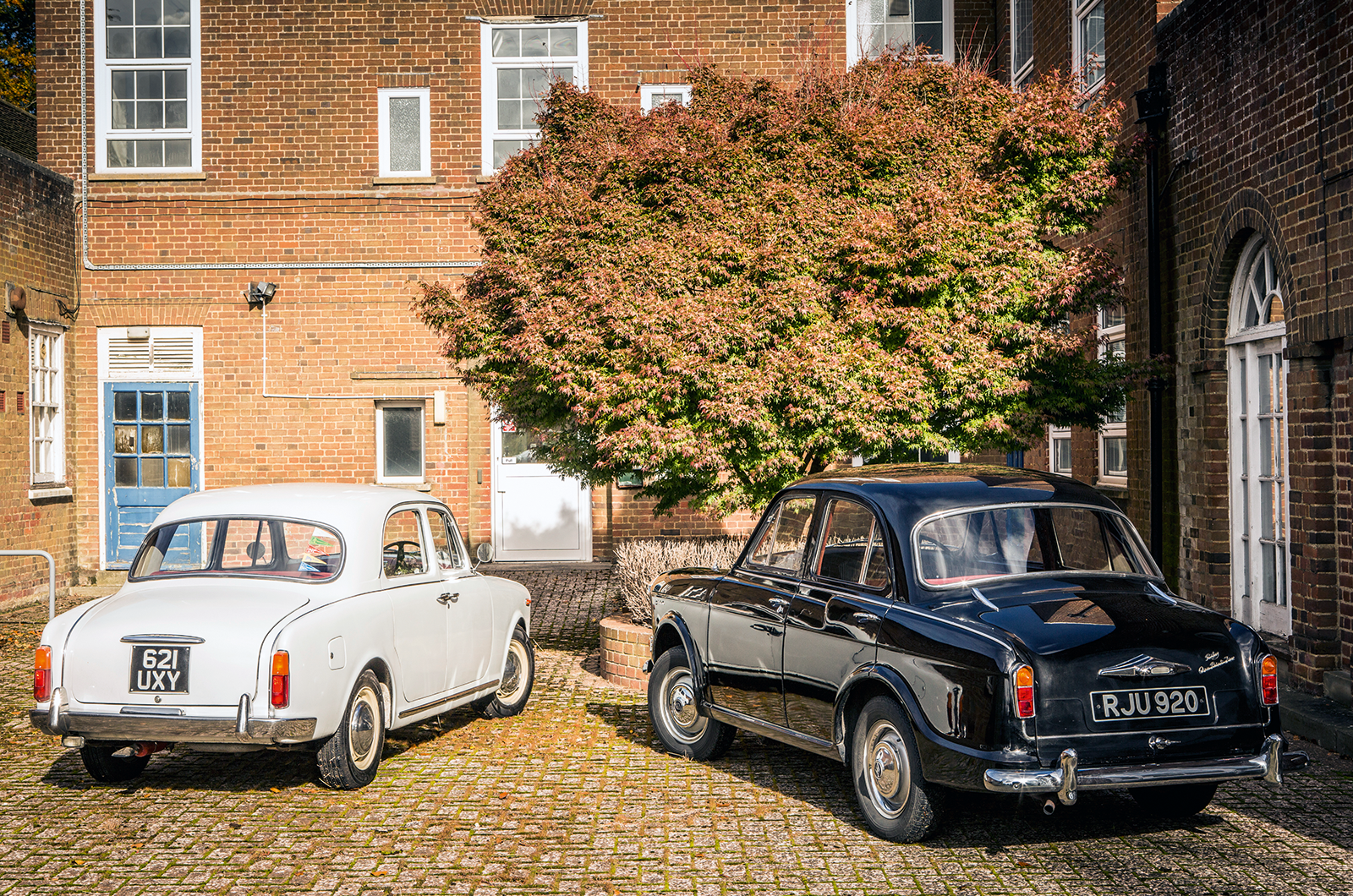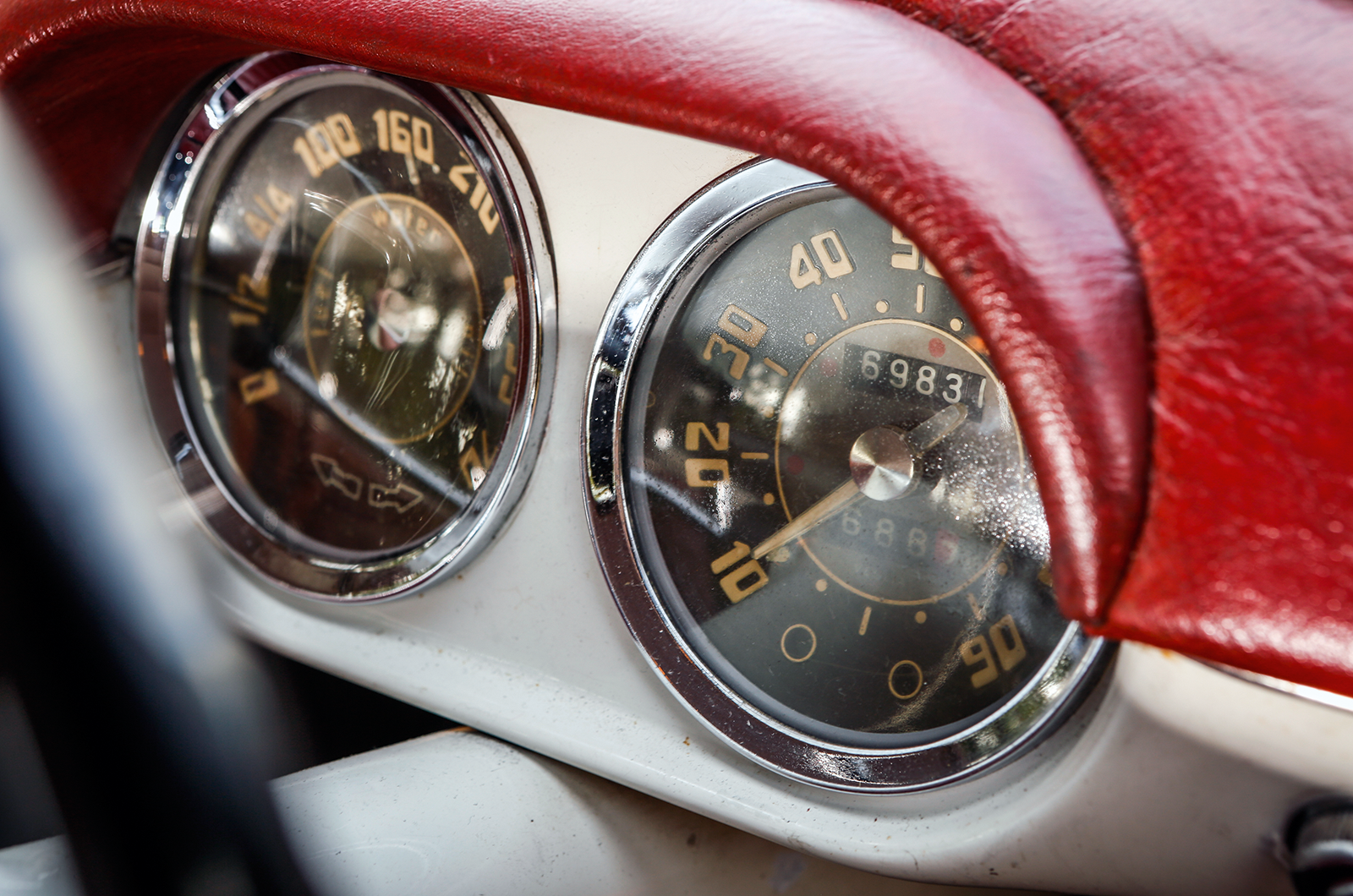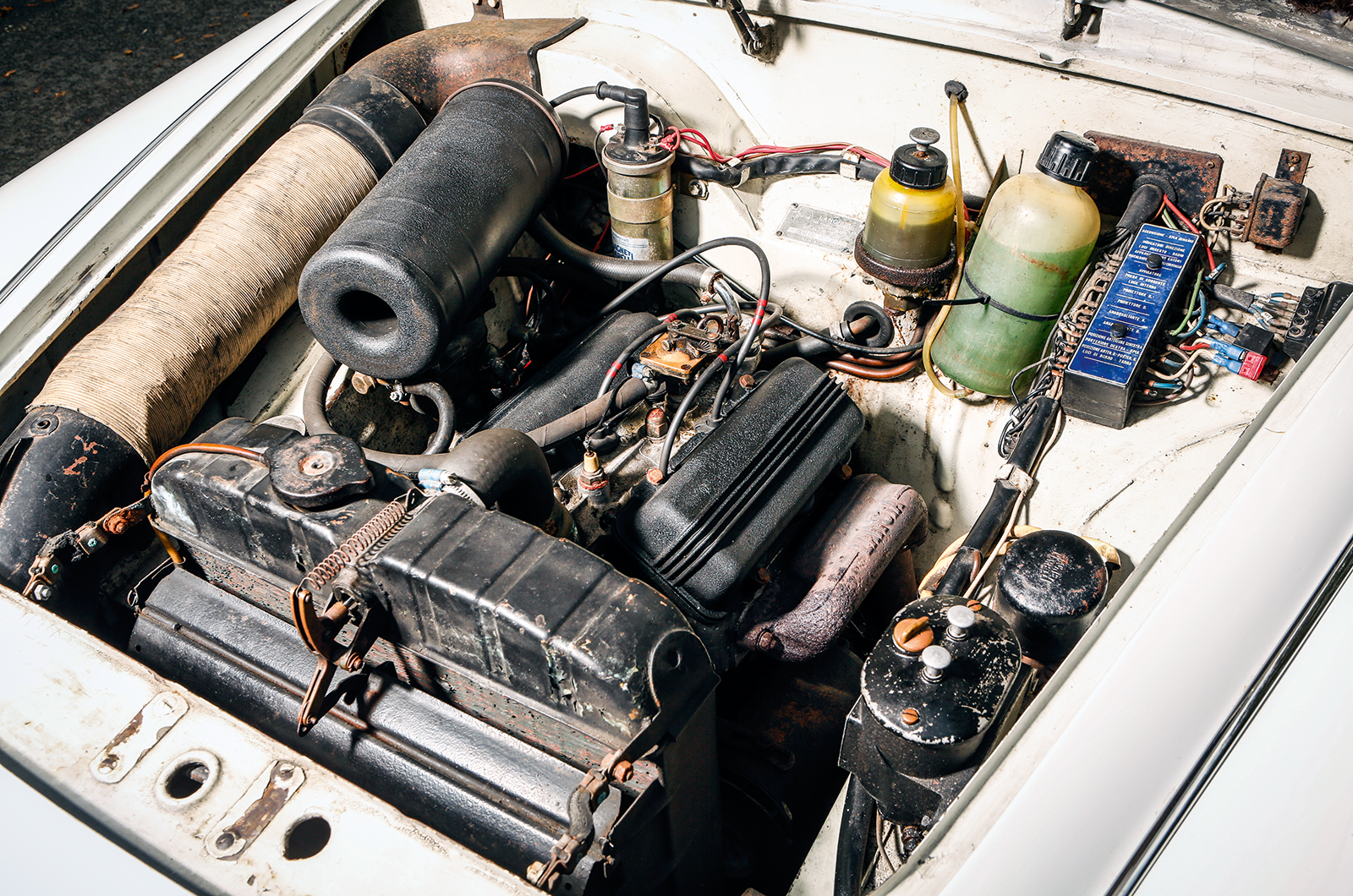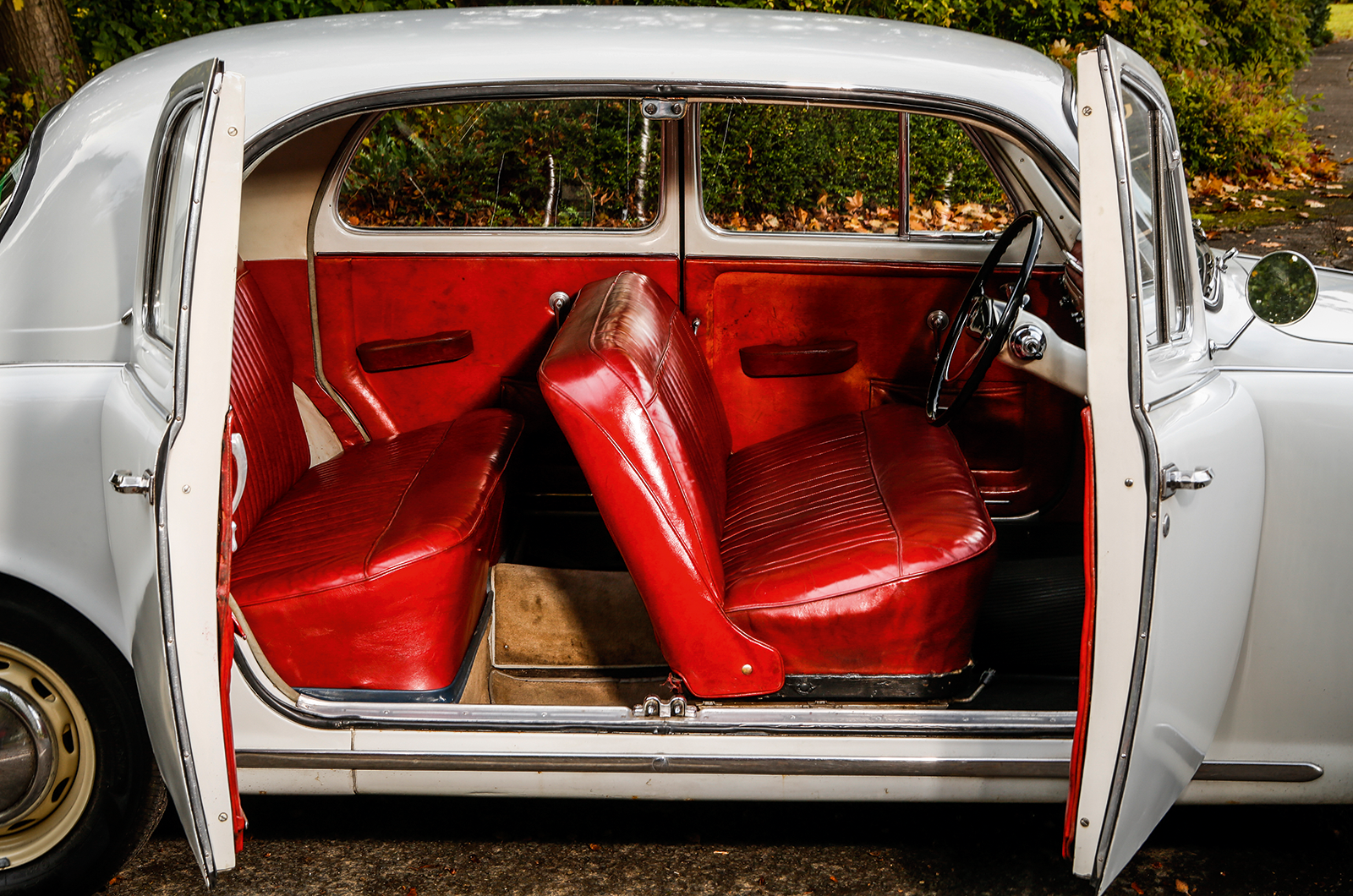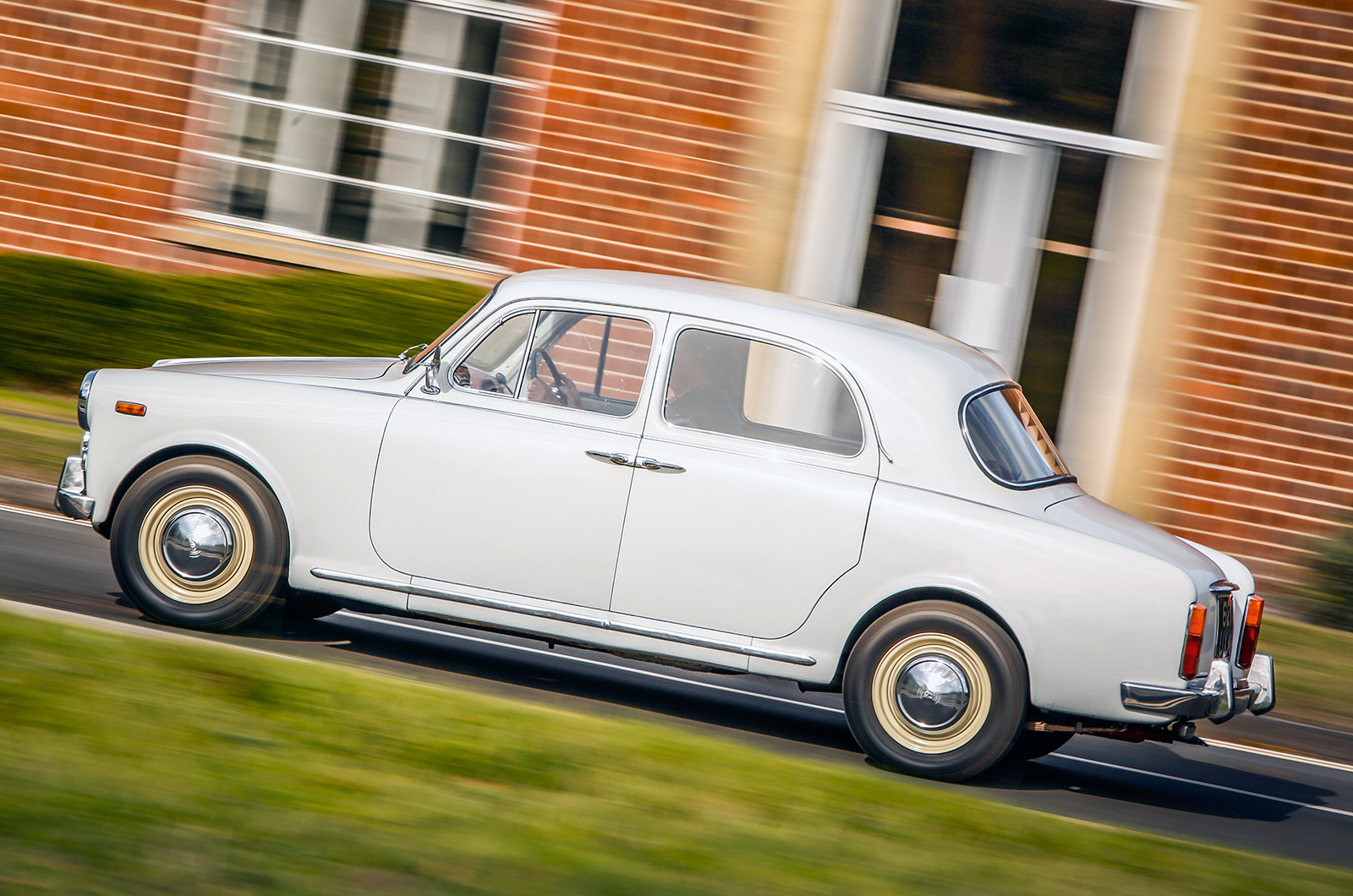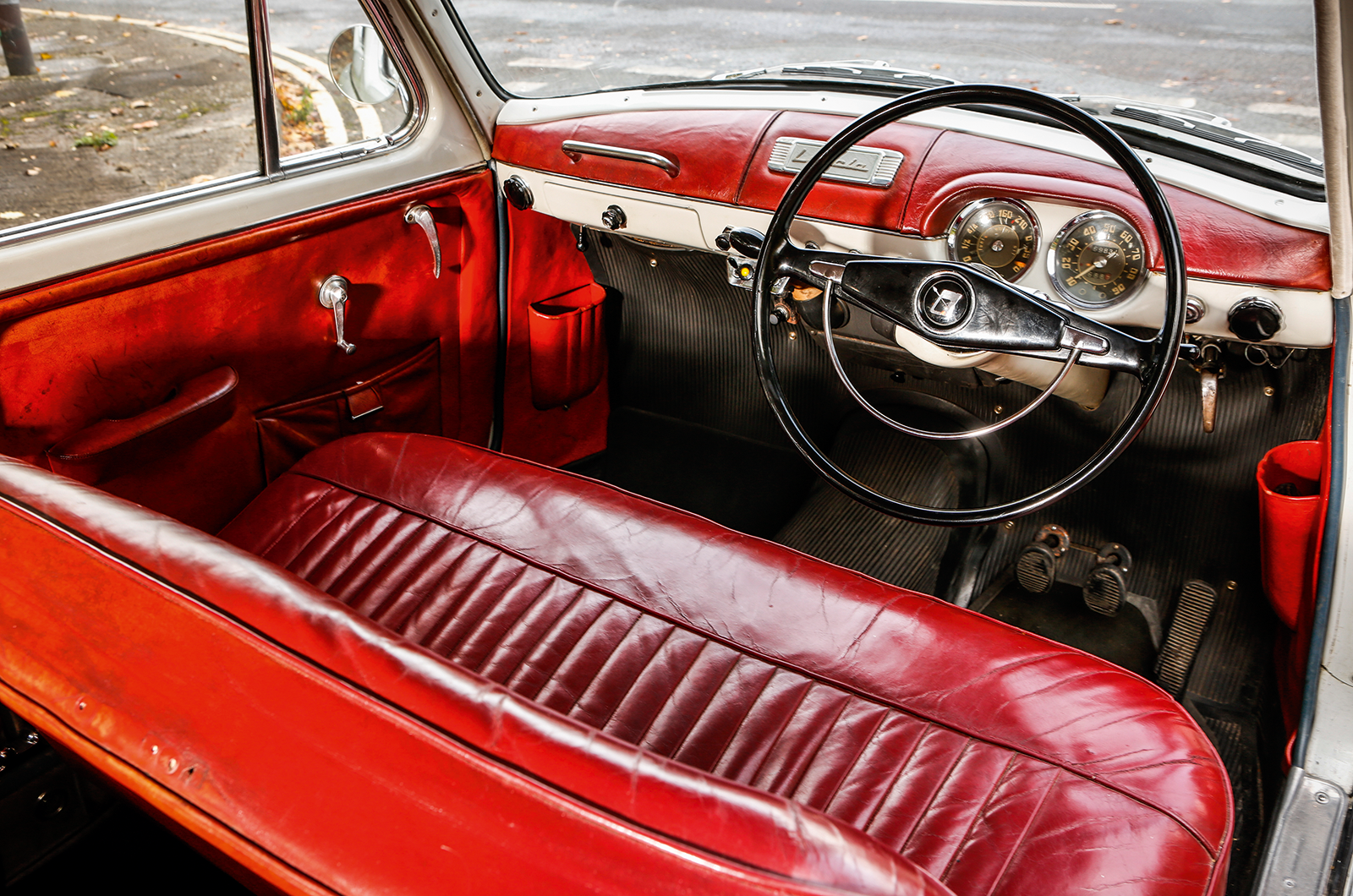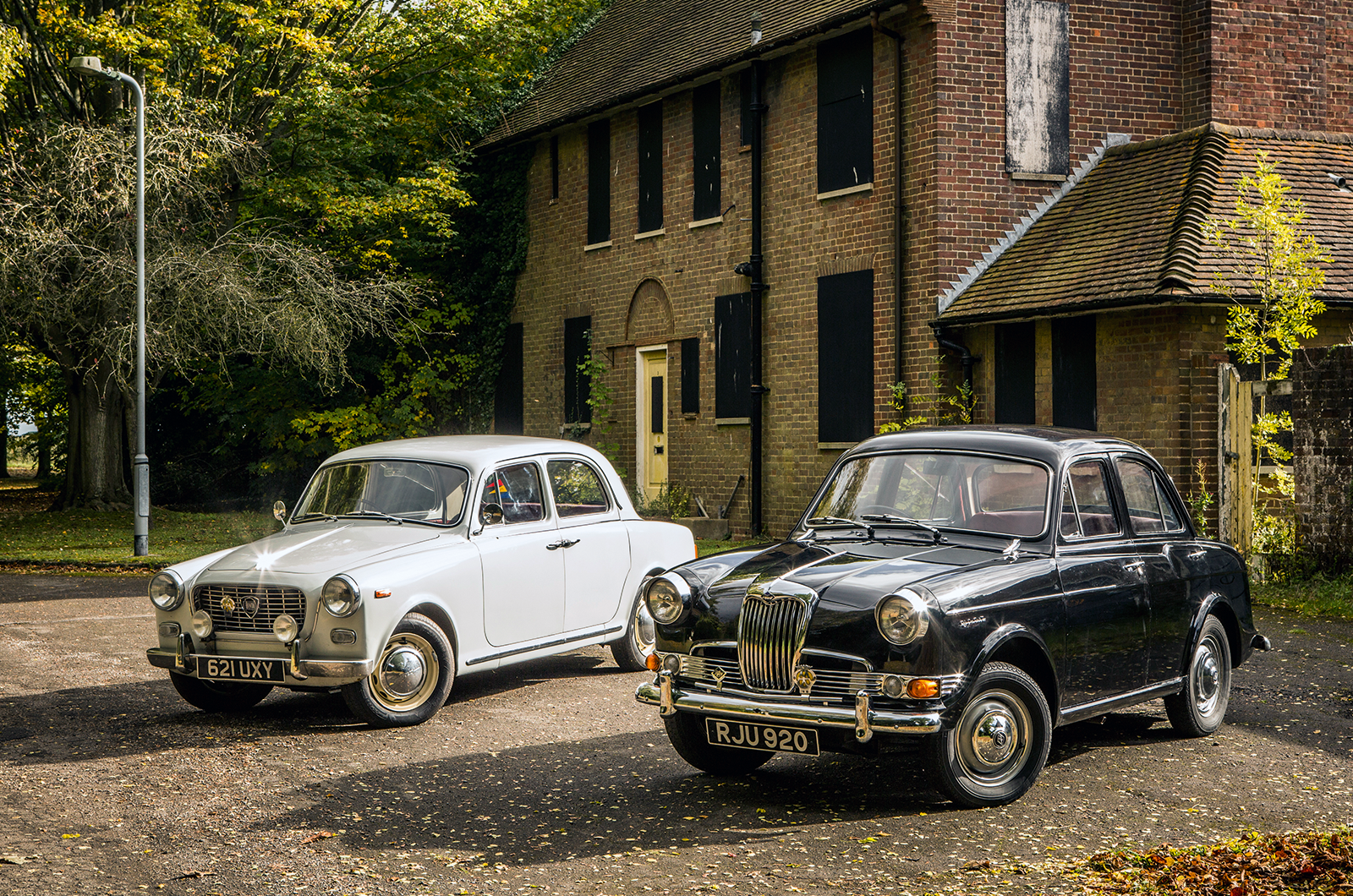The Riley is a wonderful demonstration that mass production need not infer homogeneity and that BMC’s use of its various badges was not always illogical.
In fact, the One-Point-Five ranks alongside the Vanden Plas 1100 and Wolseley Six ‘Landcrab’ as cars where a traditional grille is appropriately applied.
Latin style abounds within the Lancia, with its painted metal and half-trimmed dashboard
It was both heir to the pre-war Nine and a car that could have been the basis for a generation of 1960s Rileys that were ‘As Old as the Industry, As Modern as the Hour’.
But instead of developing the marque as a rival to BMW or Alfa Romeo and Lancia, BMC’s misuse of the Blue Diamond badge until its eventual demise in 1969 remains one of the saddest chapters in its history.
As for the Appia, in many ways, it marked the end of an era in Lancia’s history – its last small rear-drive saloon and the final model to use its trademark sliding-pillar front suspension.
One of the company’s major problems during the 1950s was that its production costs were too high, such was its standards and virtually every aspect of the Appia is concerned with quality as opposed to lira-saving. And the Series III still makes many a modern car feel distinctly tinny.
This decision is a tough one…
Above all, any motor vehicle is a set of ideas and social values of its era and this is what makes the Riley and the Lancia especially fascinating.
If the former seems to perfectly suit Kenneth Moore types who perpetually uttered the word “gosh”, the Appia dates from a period of Italian history when ownership of any Lancia would convey a sense of distinction, allowing its driver to pass lesser cars with a sense of quiet amusement.
If I opt for the Riley, it is because my heart lies with visions of a ’50s Rank comedy England, but catch me on another day and I would take an Appia to Rimini without hesitation.
Images: Tony Baker
Thanks to Lancia Motor Club; Riley Motor Club; everyone at Harwell
This was originally in our May 2017 magazine; all information was correct at the date of original publication
Factfiles
Riley One-Point-Five
- Sold/number built 1957-’65/39,568
- Construction steel monocoque
- Engine all-iron, pushrod 1489cc ‘four’, with twin SU carburettors
- Max power 60bhp @ 4800rpm
- Max torque 81lb ft @ 2400rpm
- Transmission four-speed manual, RWD
- Suspension: front independent double wishbones and torsion bars rear live axle, semi-elliptic leaf springs; lever-arm dampers f/r
- Steering rack and pinion
- Brakes drums all round
- Length 12ft 9in (3886mm)
- Width 5ft 1in (1549mm)
- Height 5ft (1524mm)
- Wheelbase 7ft 2in (2184mm)
- Weight 2060lb (934kg)
- 0-60mph 19.8 secs
- Top speed 86mph
- Mpg 24-30
- Price new £839 15s 7d
Lancia Appia Series III
- Sold/number built 1953-’63/98,027
- Construction steel monocoque
- Engine iron-block, alloy crankcase and heads, pushrod 1090cc V4, with Weber carburettor
- Max power 47bhp @ 5000rpm
- Max torque 63lb ft @ 3000rpm
- Transmission four-speed manual, RWD
- Suspension: front independent sliding pillars rear live axle, semi-elliptic leaf springs, lever-arm dampers
- Steering worm and sector
- Brakes drums all round
- Length 13ft 2¼in (4020mm)
- Width 4ft 10in (1473mm)
- Height 4ft 9in (1448mm)
- Wheelbase 8ft 2¾in (2508mm)
- Weight 2028lb (920kg)
- 0-60mph 21 secs
- Top speed 82mph
- Mpg 35-45
- Price new £1587 15s 10d
READ MORE
Wolseley 4/44: from £15 cast-off to lifelong friend
Buyer’s guide: Riley Elf and Wolseley Hornet
Troubled succession: Lancia Aurelia and Lancia Flaminia
Andrew Roberts
Andrew is a long-time contributor to Classic & Sports Car
